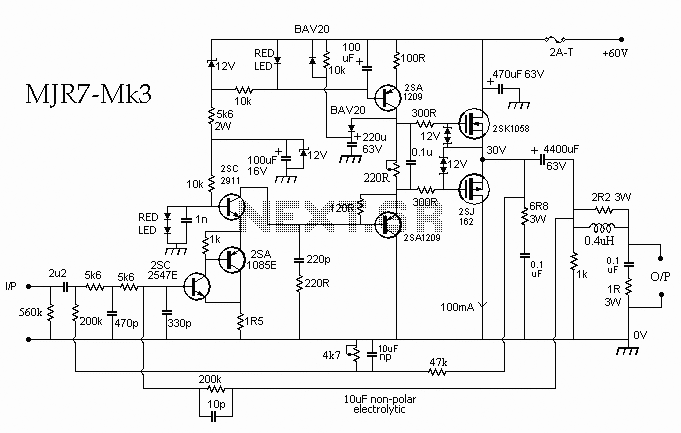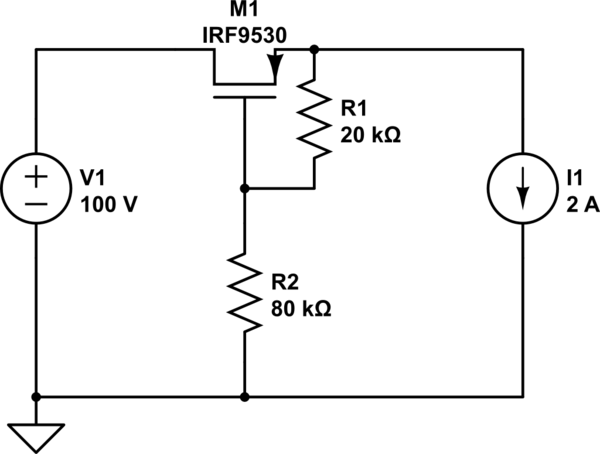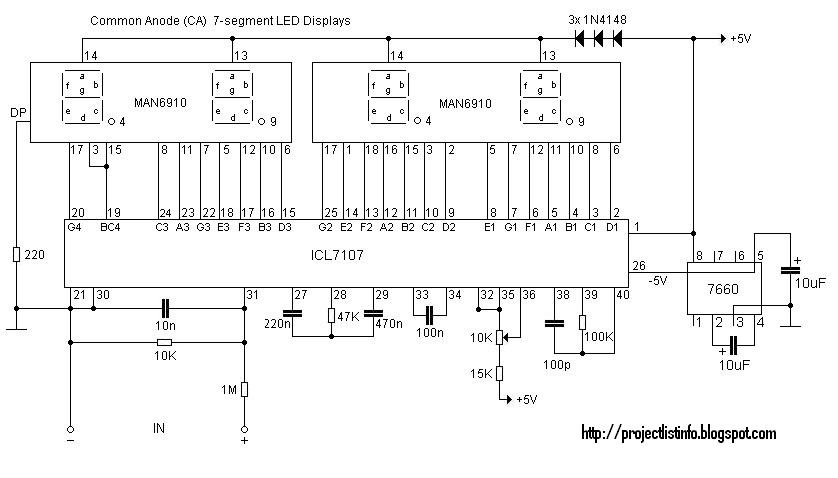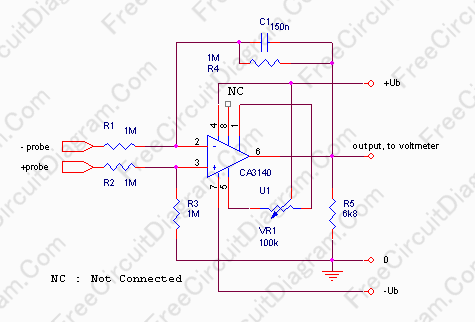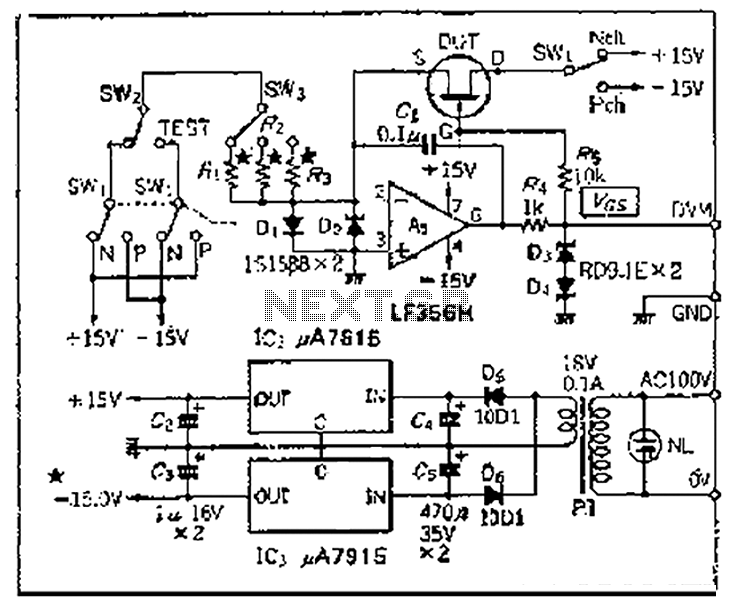
FET VOLTMETER
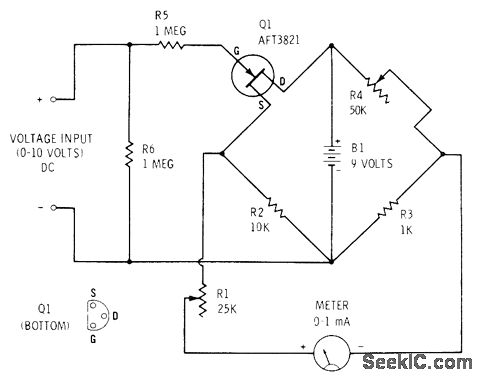
A Field Effect Transistor (FET) is incorporated into one leg of a Wheatstone bridge, resulting in a meter with an input impedance exceeding 1 megohm. To achieve a zero reading on the meter when no input voltage is present, R4 must be adjusted accordingly. When powered by a 9-volt battery, the resistor RI can be adjusted to provide a full-scale meter reading of 8 volts. When using a 12-volt battery, the meter's range is calibrated to display from 0 to 10 volts.
The described circuit utilizes a Wheatstone bridge configuration, which is commonly employed for precise measurement of resistance and voltage. The inclusion of a FET enhances the input impedance of the circuit, making it suitable for measuring small voltage changes without significantly loading the source. The high input impedance of over 1 megohm ensures minimal interference with the circuit under test, allowing for accurate readings.
In this setup, the Wheatstone bridge consists of four resistive elements, with one of the resistors replaced by the FET. The FET acts as a variable resistor, which can be adjusted to balance the bridge. The adjustment of R4 is critical for nulling the meter reading when there is no input voltage, ensuring that the system can effectively detect minute variations in voltage.
The resistor RI plays a pivotal role in defining the scale of the meter. By adjusting RI while using a 9-volt battery, the user can set the meter to read a maximum of 8 volts, effectively calibrating the system for specific applications. When a 12-volt battery is utilized, the meter's range extends to 0-10 volts, providing flexibility for different measurement scenarios.
This circuit design is particularly useful in applications requiring high sensitivity and precision, such as in laboratory settings or in the development of electronic components. The ability to adjust the meter range and maintain high input impedance makes this configuration versatile for various testing and measurement tasks.
Overall, this Wheatstone bridge circuit with a FET demonstrates a practical approach to enhancing measurement capabilities in electronic engineering applications.With FET in one leg of Wheatstone bridge, meter has input impedance of over 1 megohm. With no input voltage, adjust R4 so meter reads zero. With 9-V battery, RI can be adjusted for full-scale meter reading of 8 V. With 12-V battery, meter range is 0-10 V. -F. M. Mims, "Transistor Projects, Vol. 2, " Radio Shack, Fort Worth, TX, 1974, p 59-66. 🔗 External reference
The described circuit utilizes a Wheatstone bridge configuration, which is commonly employed for precise measurement of resistance and voltage. The inclusion of a FET enhances the input impedance of the circuit, making it suitable for measuring small voltage changes without significantly loading the source. The high input impedance of over 1 megohm ensures minimal interference with the circuit under test, allowing for accurate readings.
In this setup, the Wheatstone bridge consists of four resistive elements, with one of the resistors replaced by the FET. The FET acts as a variable resistor, which can be adjusted to balance the bridge. The adjustment of R4 is critical for nulling the meter reading when there is no input voltage, ensuring that the system can effectively detect minute variations in voltage.
The resistor RI plays a pivotal role in defining the scale of the meter. By adjusting RI while using a 9-volt battery, the user can set the meter to read a maximum of 8 volts, effectively calibrating the system for specific applications. When a 12-volt battery is utilized, the meter's range extends to 0-10 volts, providing flexibility for different measurement scenarios.
This circuit design is particularly useful in applications requiring high sensitivity and precision, such as in laboratory settings or in the development of electronic components. The ability to adjust the meter range and maintain high input impedance makes this configuration versatile for various testing and measurement tasks.
Overall, this Wheatstone bridge circuit with a FET demonstrates a practical approach to enhancing measurement capabilities in electronic engineering applications.With FET in one leg of Wheatstone bridge, meter has input impedance of over 1 megohm. With no input voltage, adjust R4 so meter reads zero. With 9-V battery, RI can be adjusted for full-scale meter reading of 8 V. With 12-V battery, meter range is 0-10 V. -F. M. Mims, "Transistor Projects, Vol. 2, " Radio Shack, Fort Worth, TX, 1974, p 59-66. 🔗 External reference

